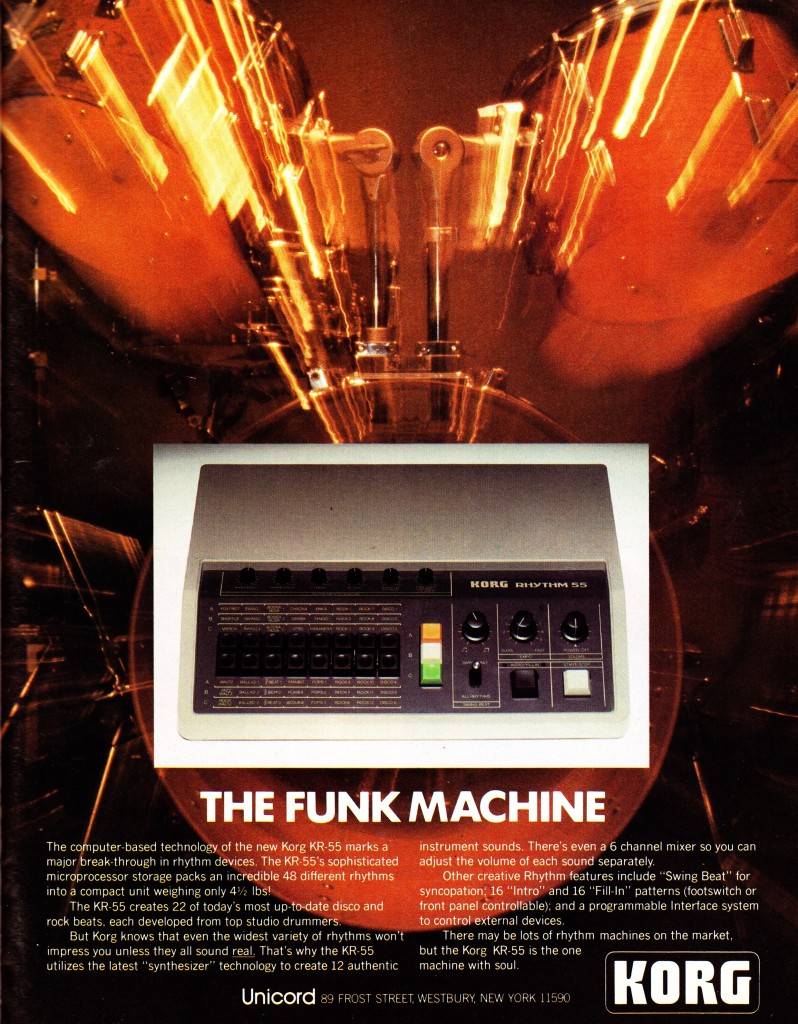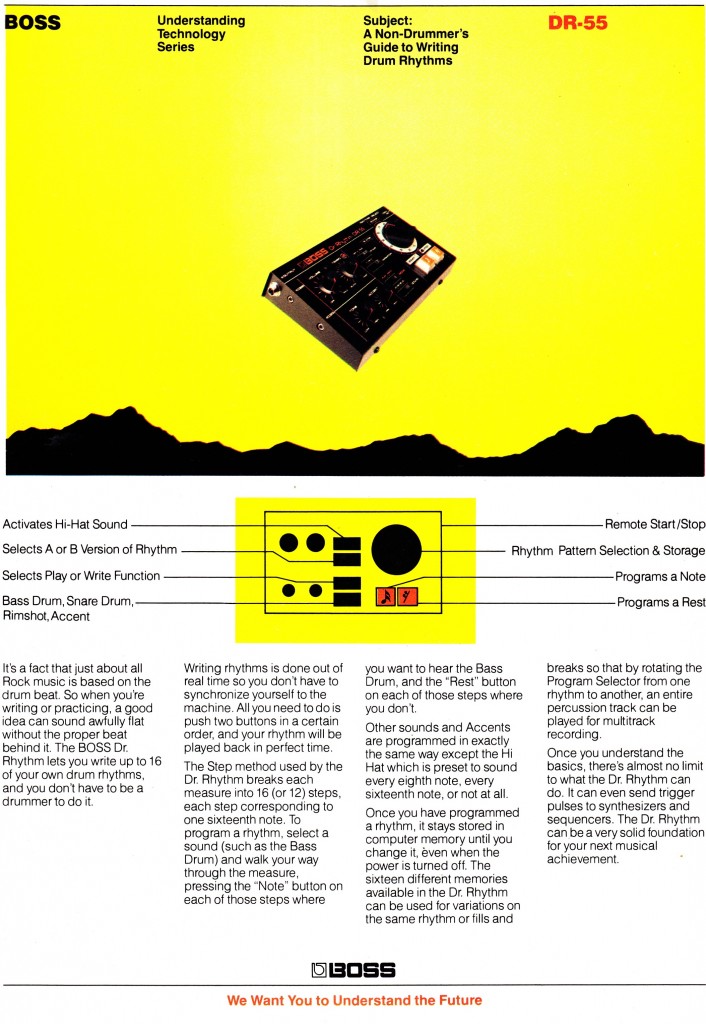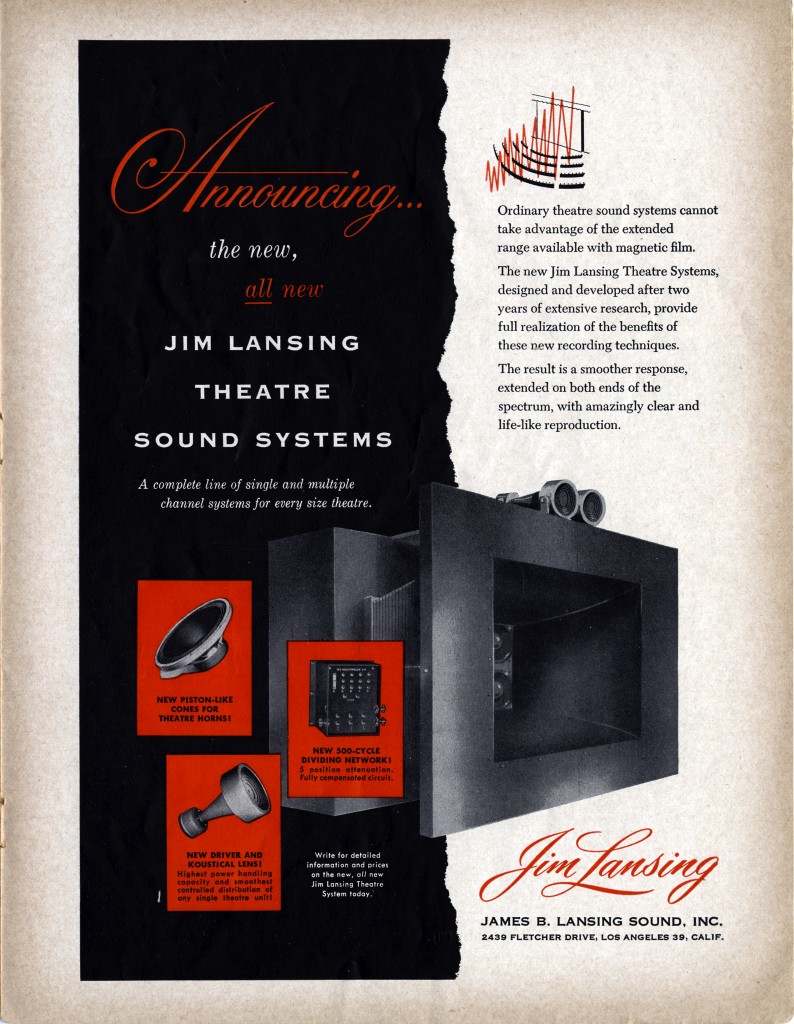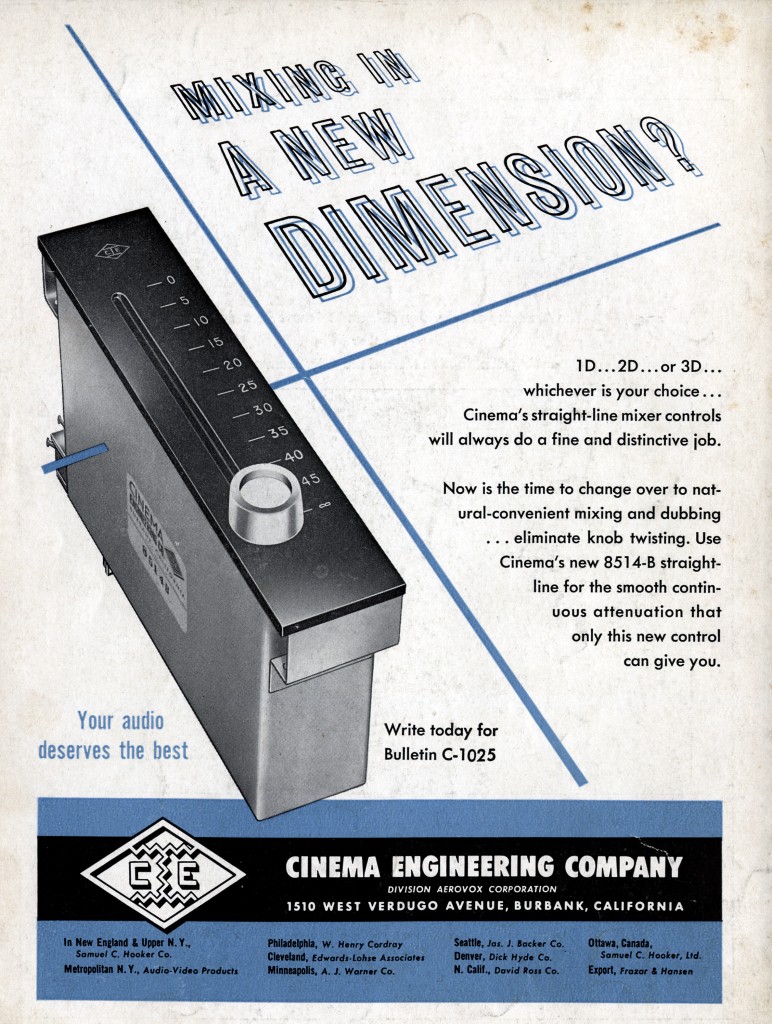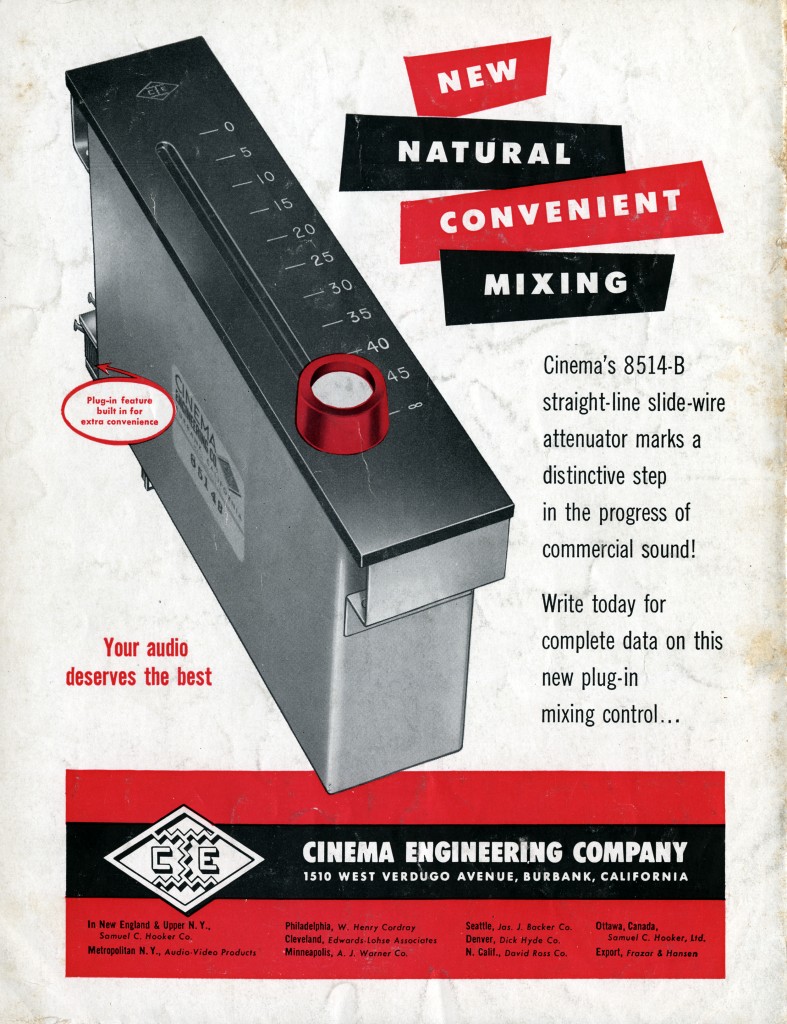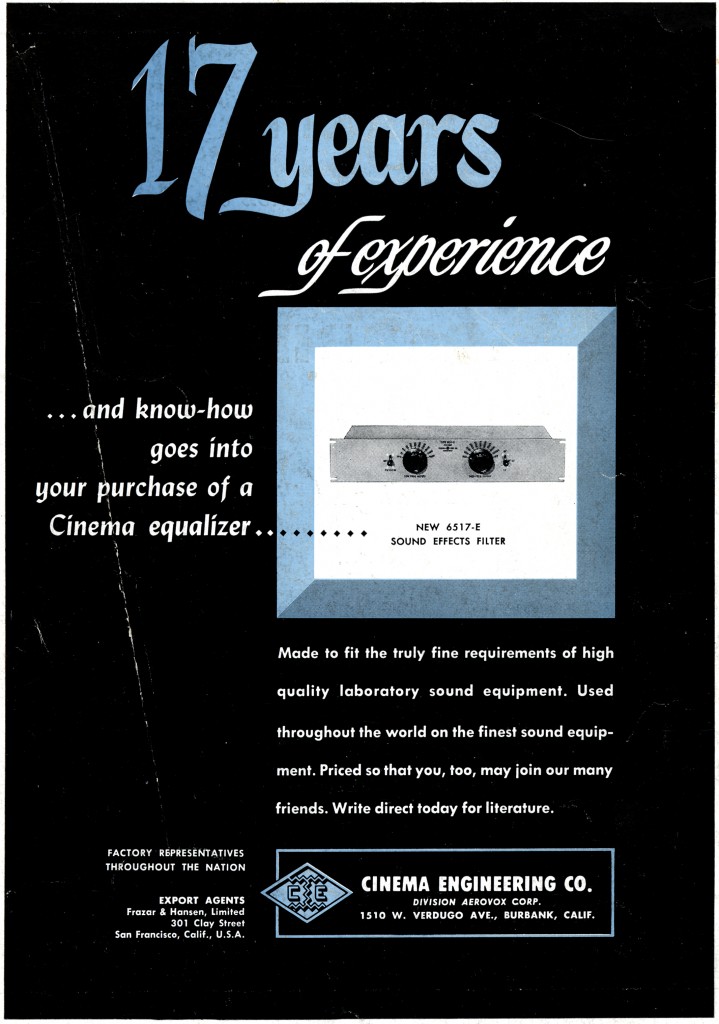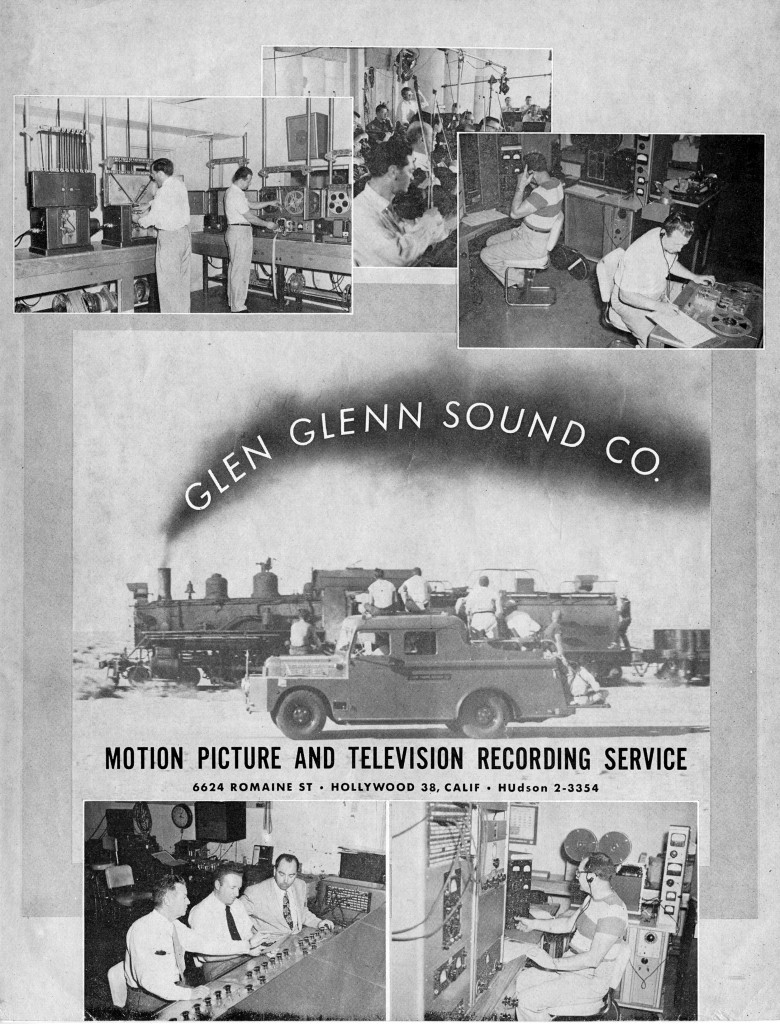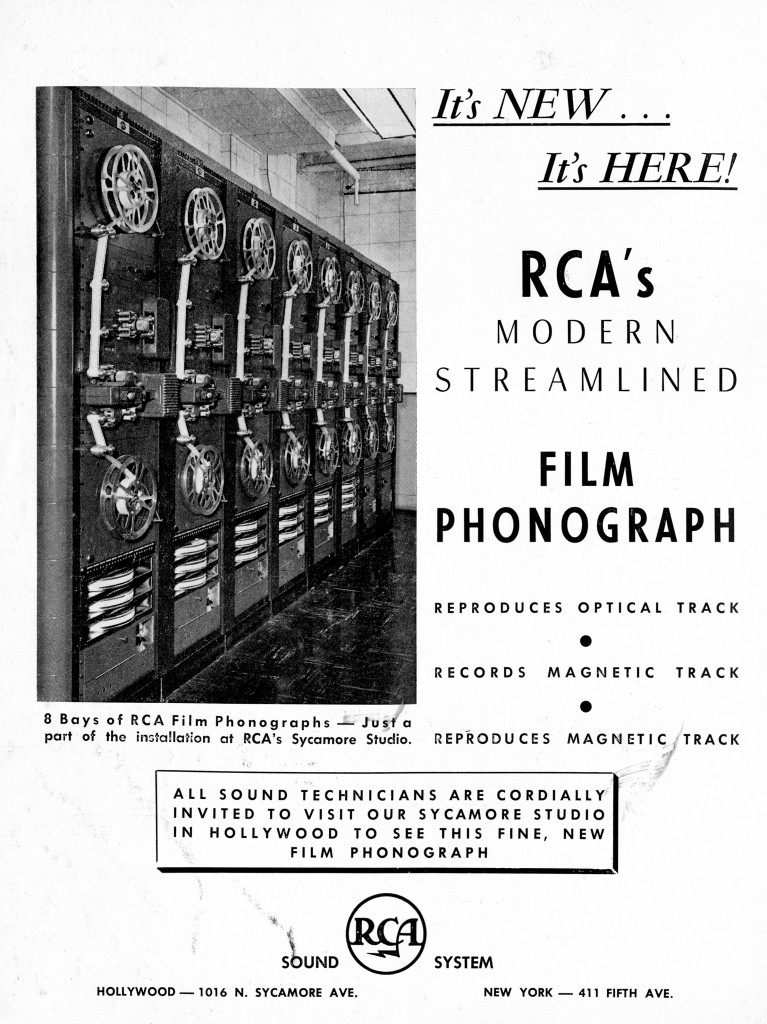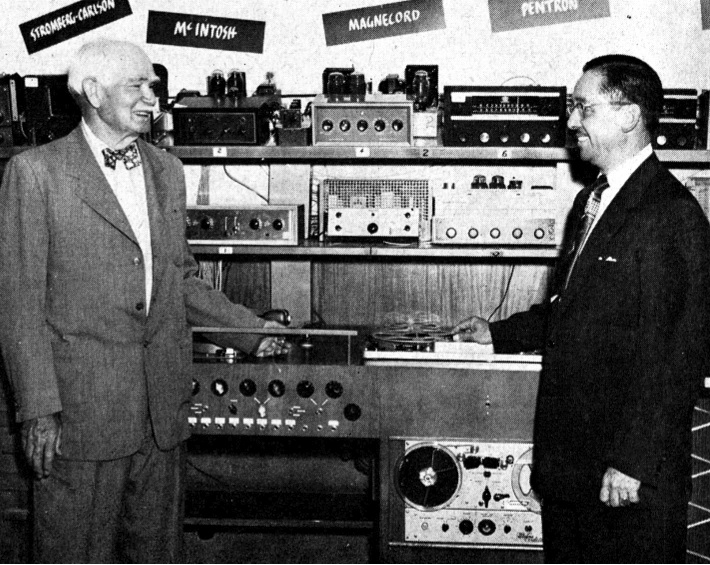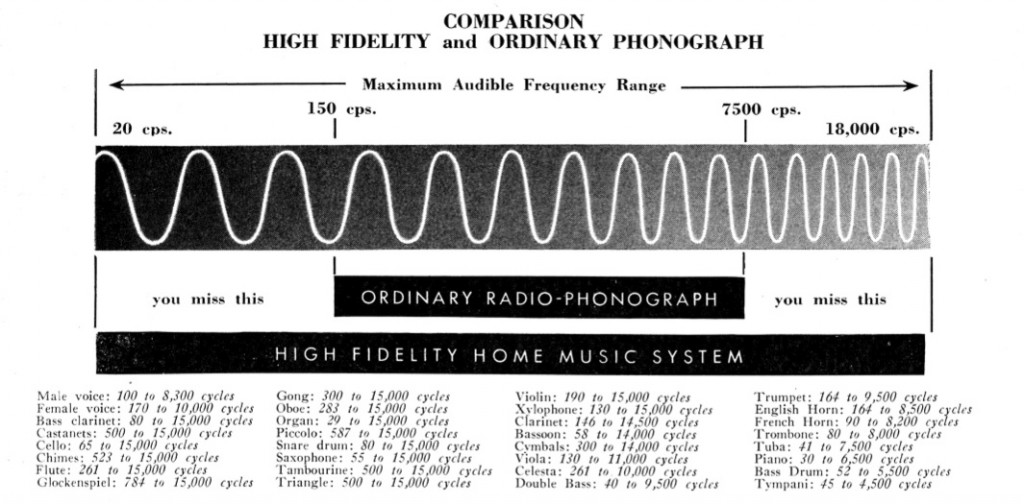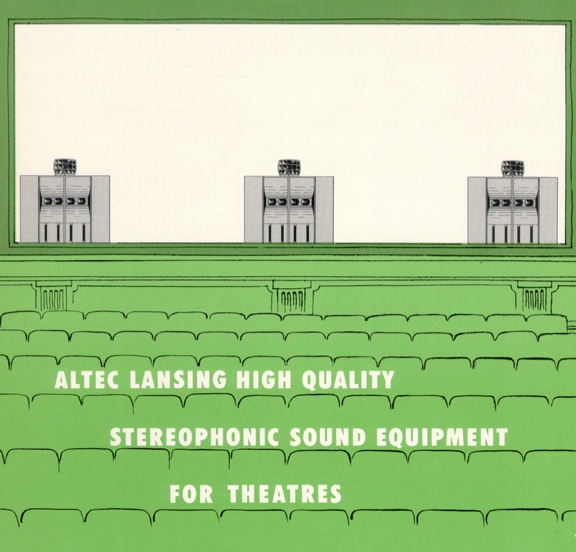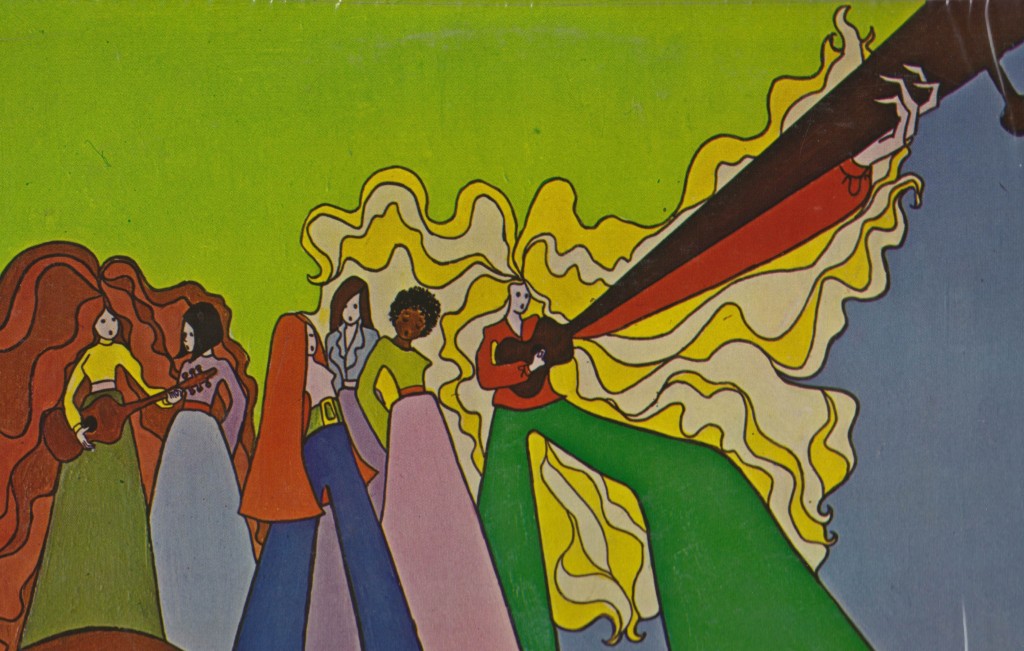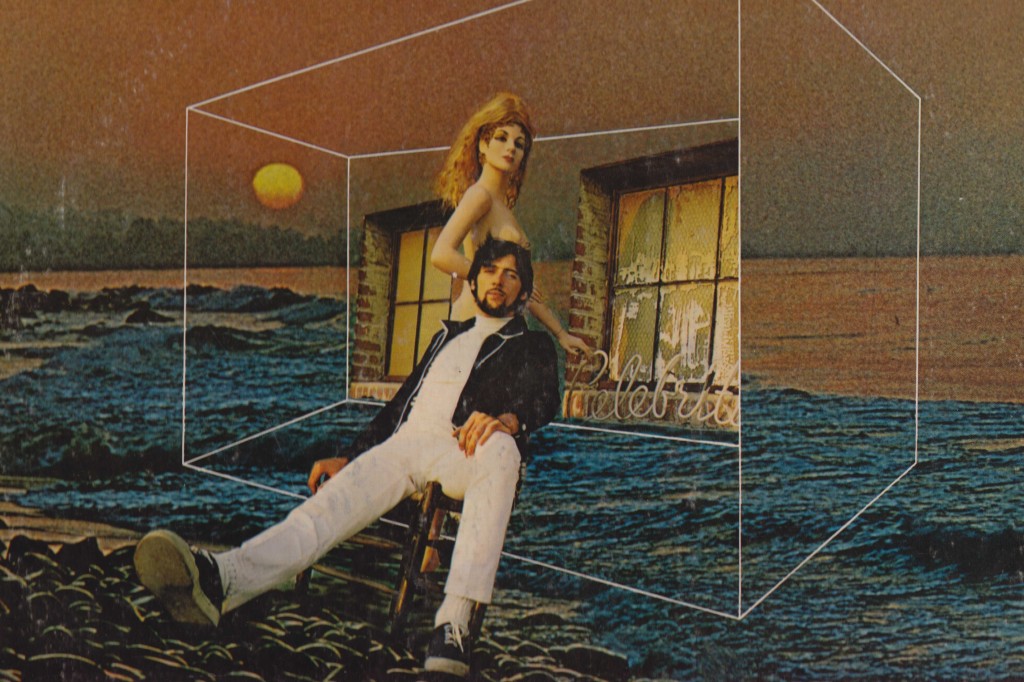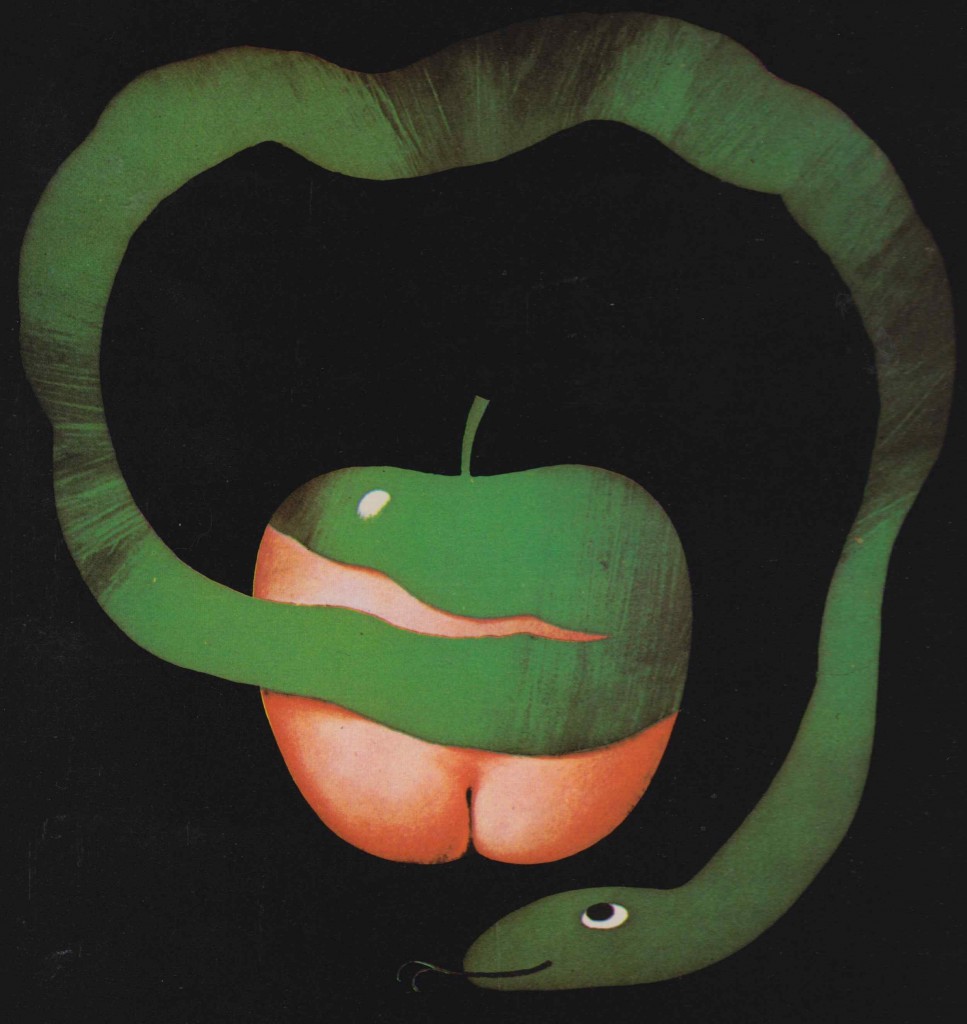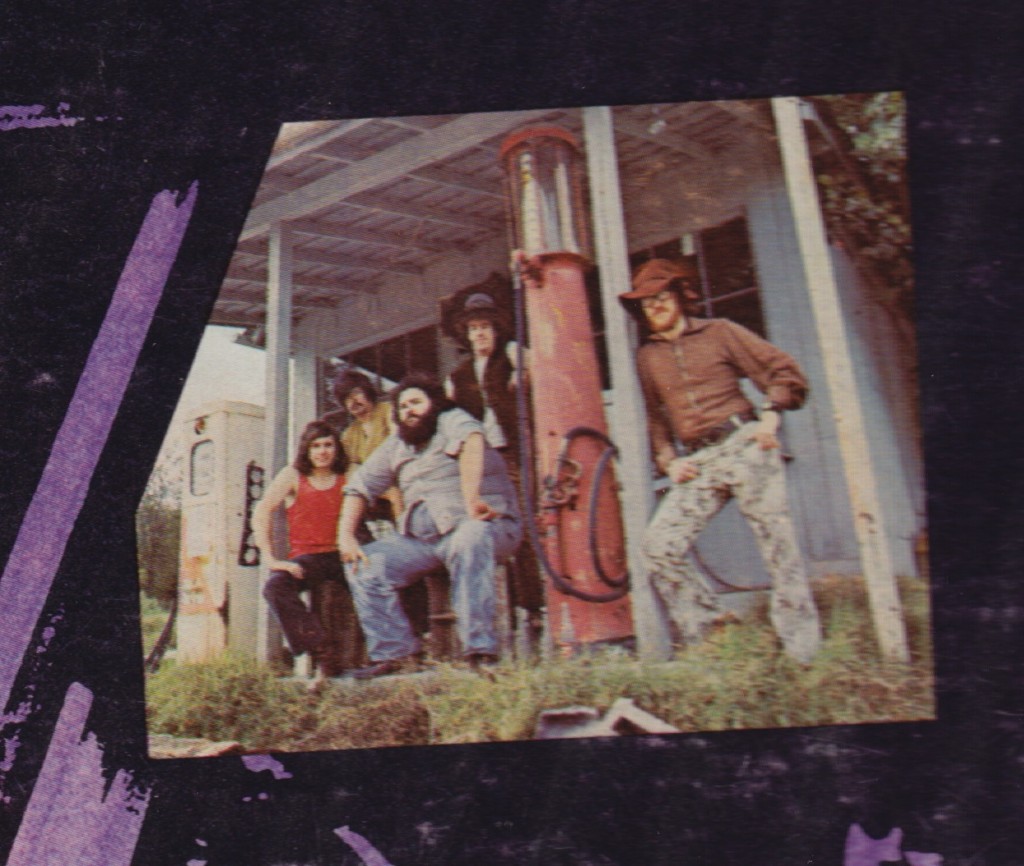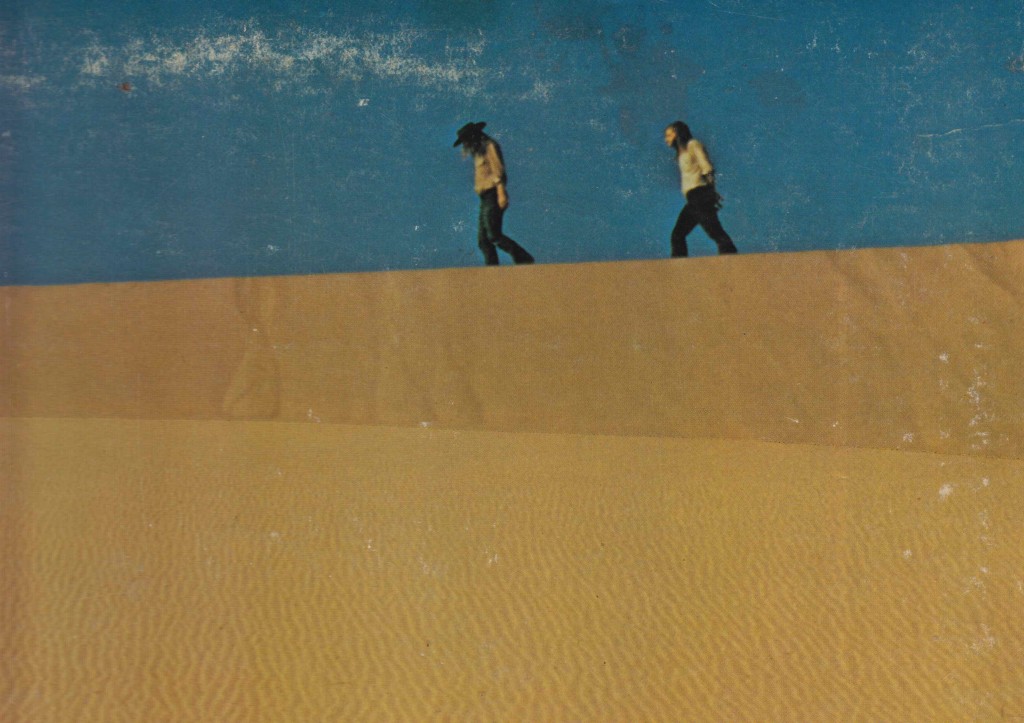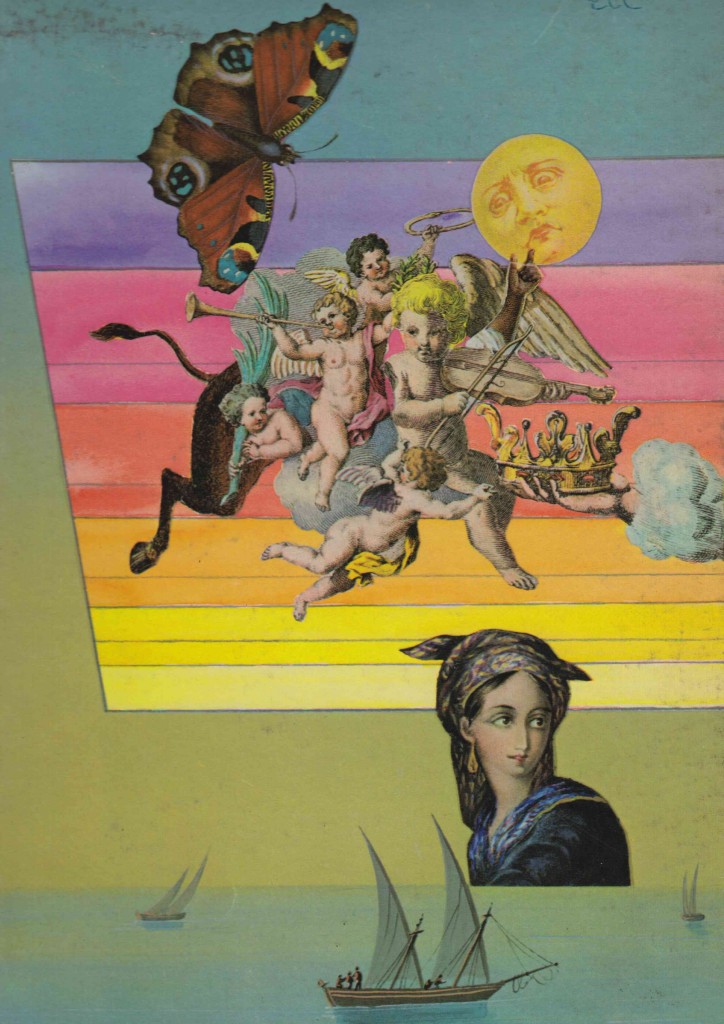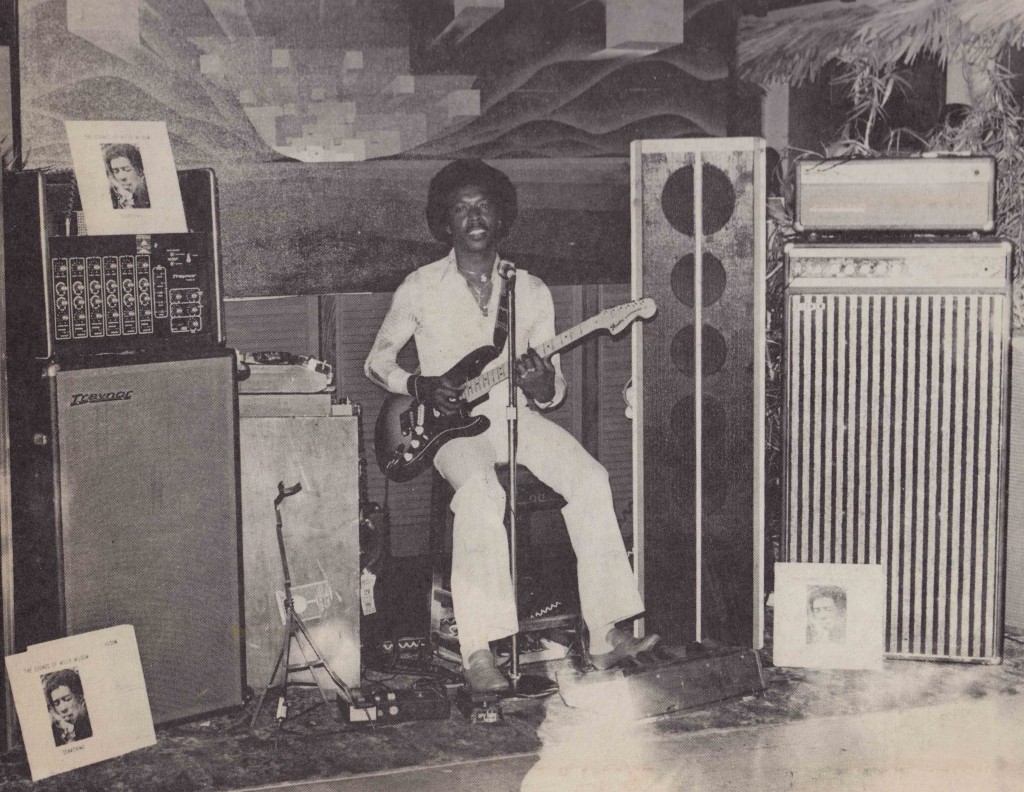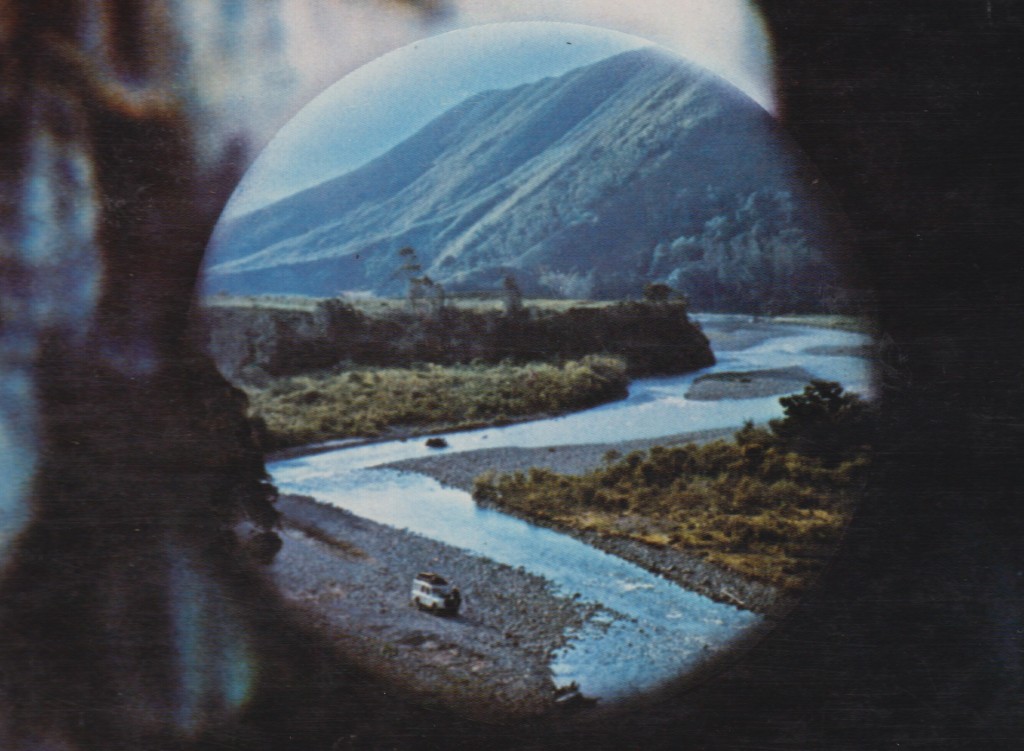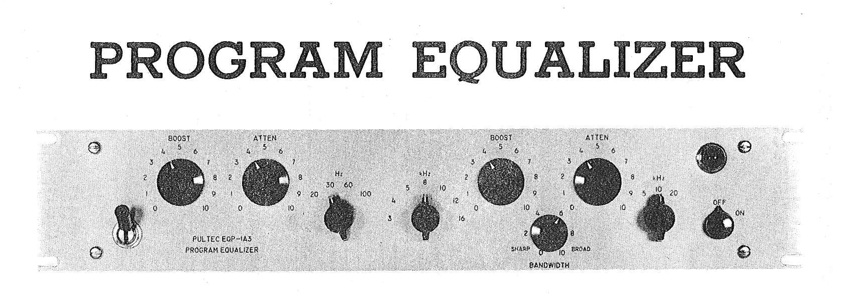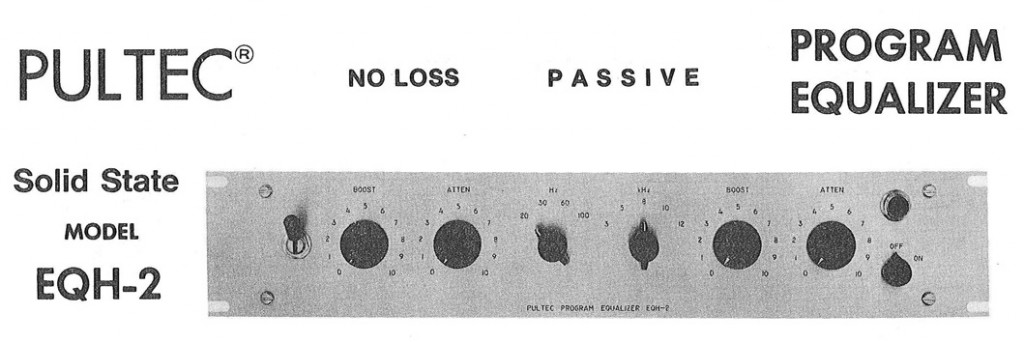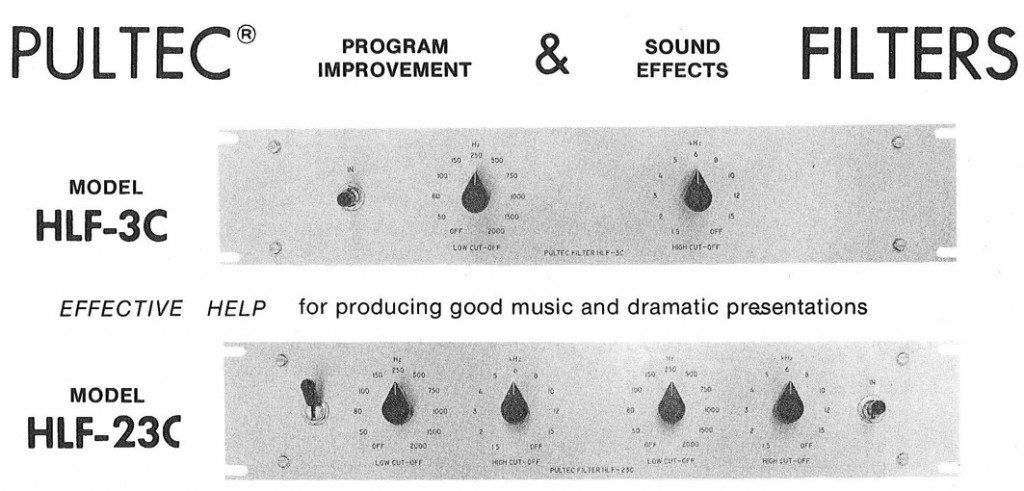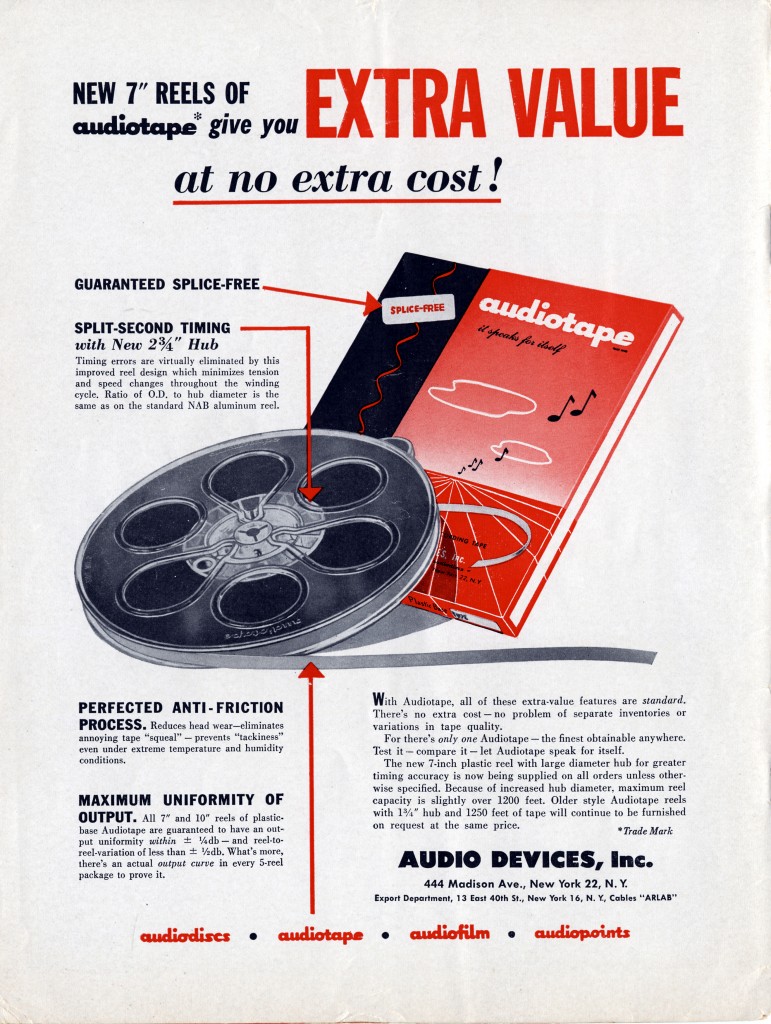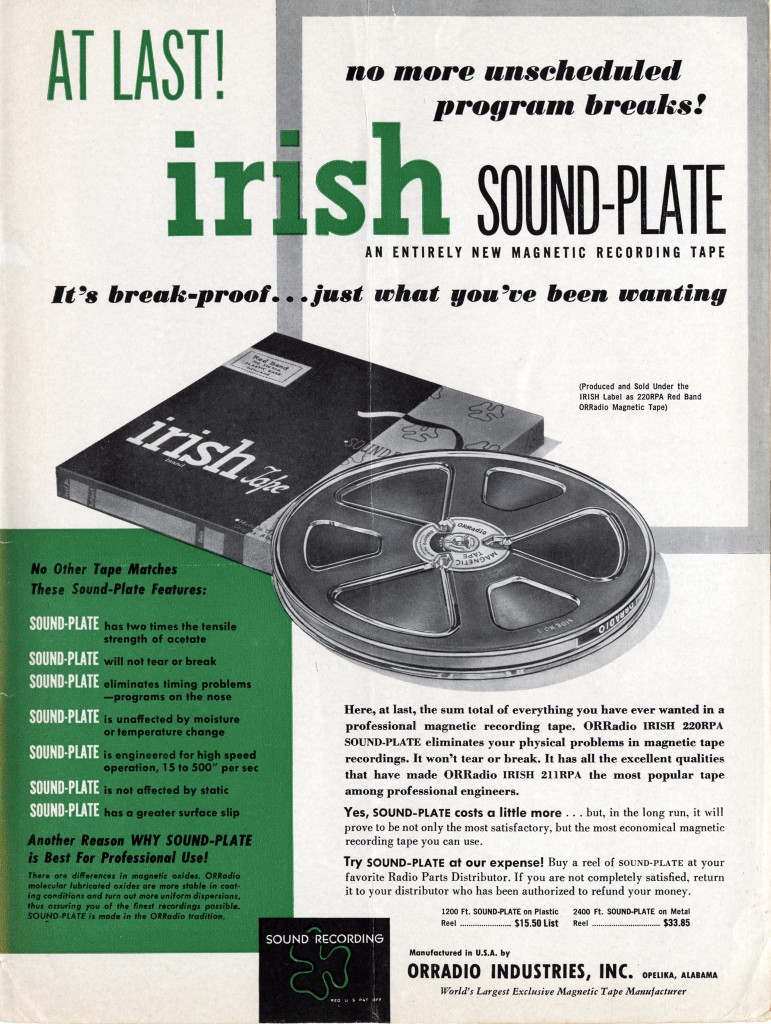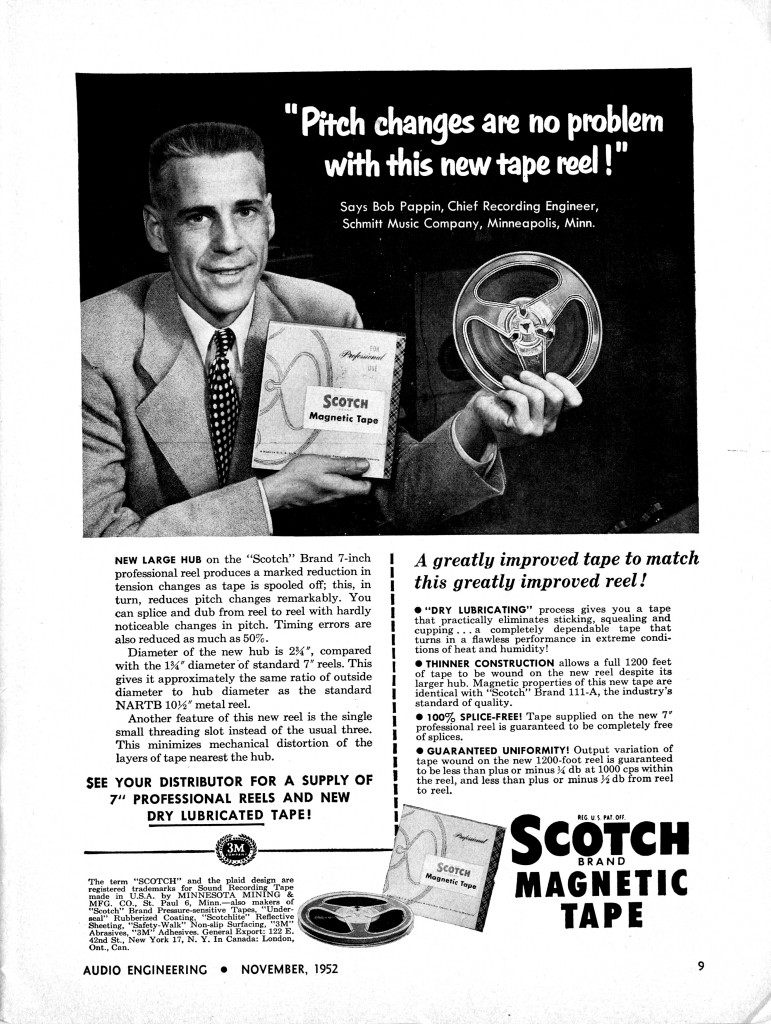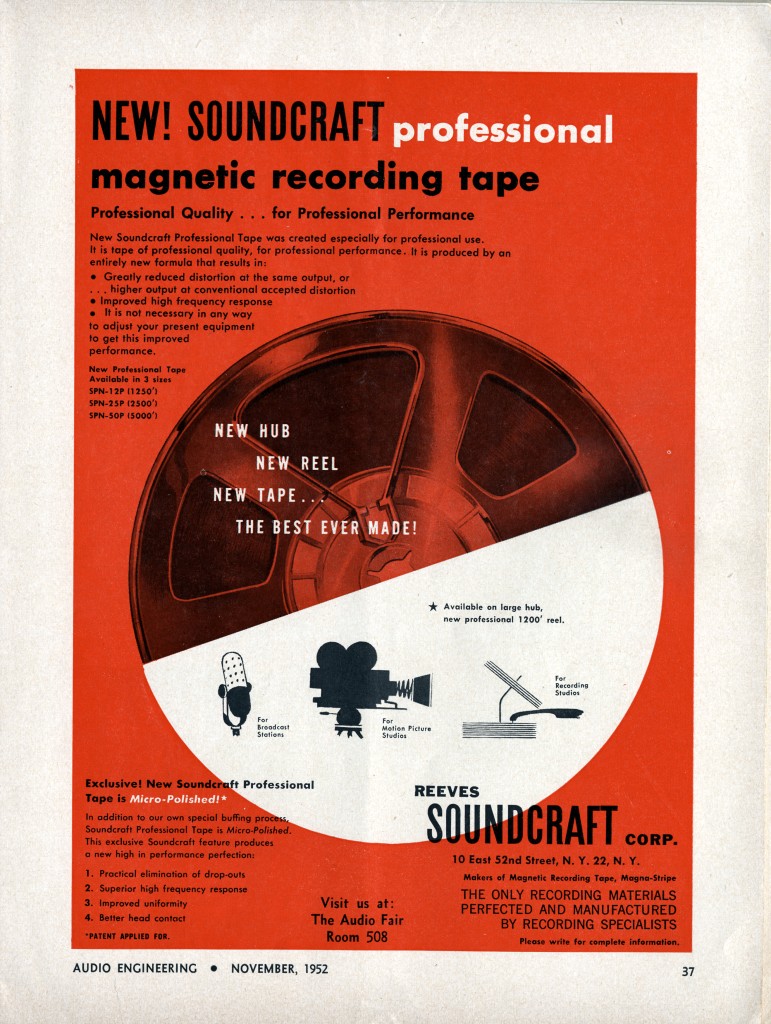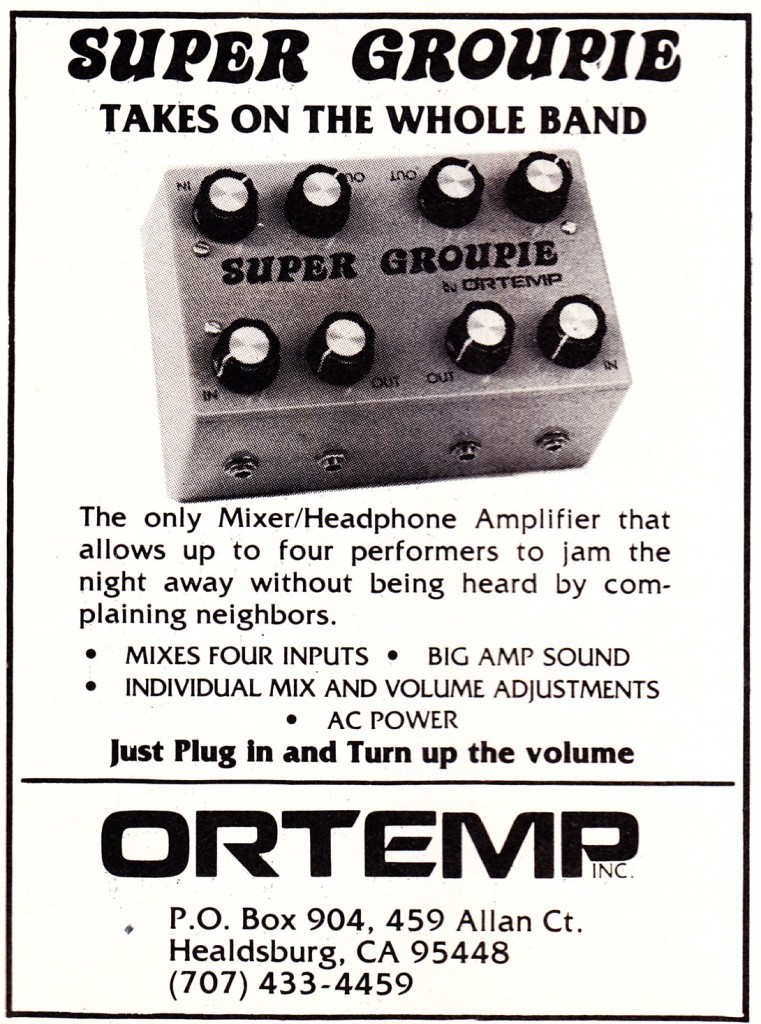 No explanation necessary
No explanation necessary
I manage to do a fair amount of business selling bespoke microphone preamps, filters, amplifiers, etc; but I could stand to sell more. Perhaps the problem is my marketing technique. Perhaps I could stand to ‘spice things up’ a bit. Perhaps the vacuum tubes in my designs could be given a more phallic character through quasi-clever wordplay and/or illustration technique. Or perhaps the complete pieces could themselves entirely become metaphorically represented by a female body/persona, and the potential buyer could be encouraged to ‘inject them full of life’ with your ‘signal.’
Does sex really sell or do we simply gravitate towards the easiest possible metaphor for any product message? And if sex DOES sell, then why not ingestion? Eating? As important as procreation is to the survival of the species, a starving man will surely choose a cheeseburger over a romantic dalliance. Perhaps the dominance of sex-based, rather than food-based, advertising in our culture, signifies nothing so much as the fact that we’re not hungry enough. If we were hungrier, would be be less easily aroused? And how about the other two ‘F’s of human instinct (fuck, feed, fight, flight)? Why not more combat-based or fear-based advertising? All the ads in the series come from a single 1981 issue of GUITAR PLAYER magazine.
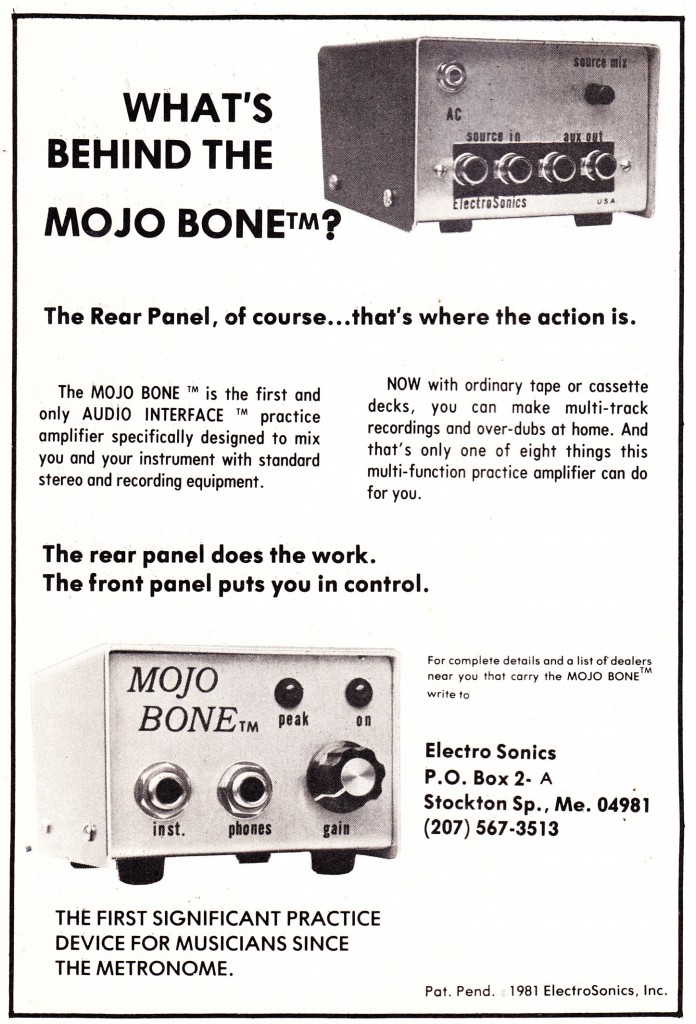 Which ‘bone’ exactly is the ‘mojo bone’? And how could this ‘bone’ interact with a ‘back door’?
Which ‘bone’ exactly is the ‘mojo bone’? And how could this ‘bone’ interact with a ‘back door’?
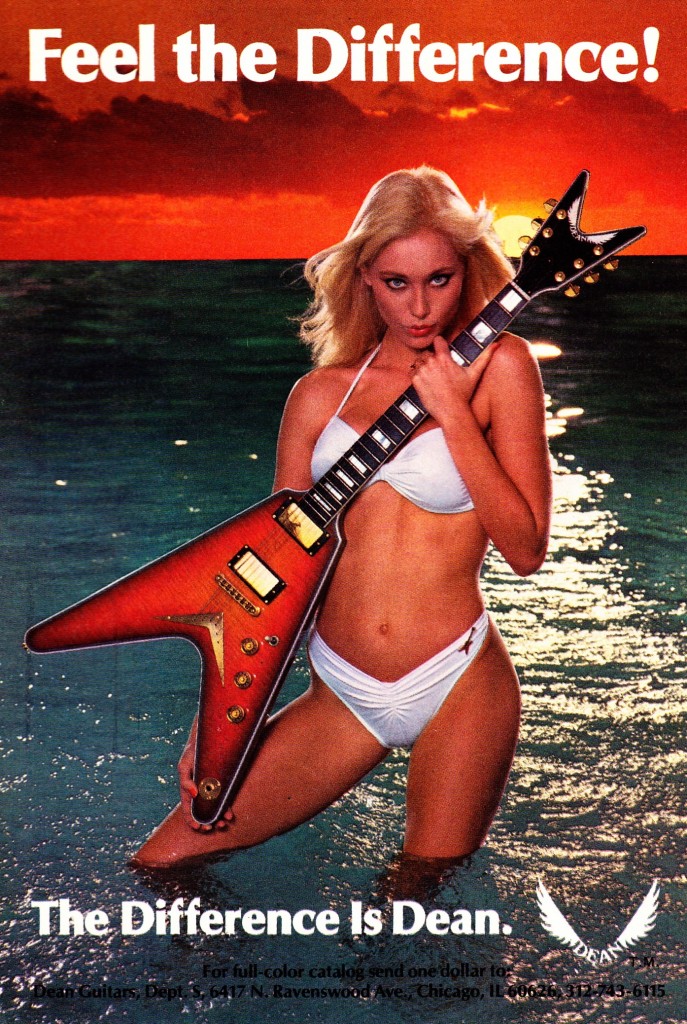 If you have been feeling/touching one body for sometime now, consider the improved sensation that could be possible from… oh never mind.
If you have been feeling/touching one body for sometime now, consider the improved sensation that could be possible from… oh never mind.
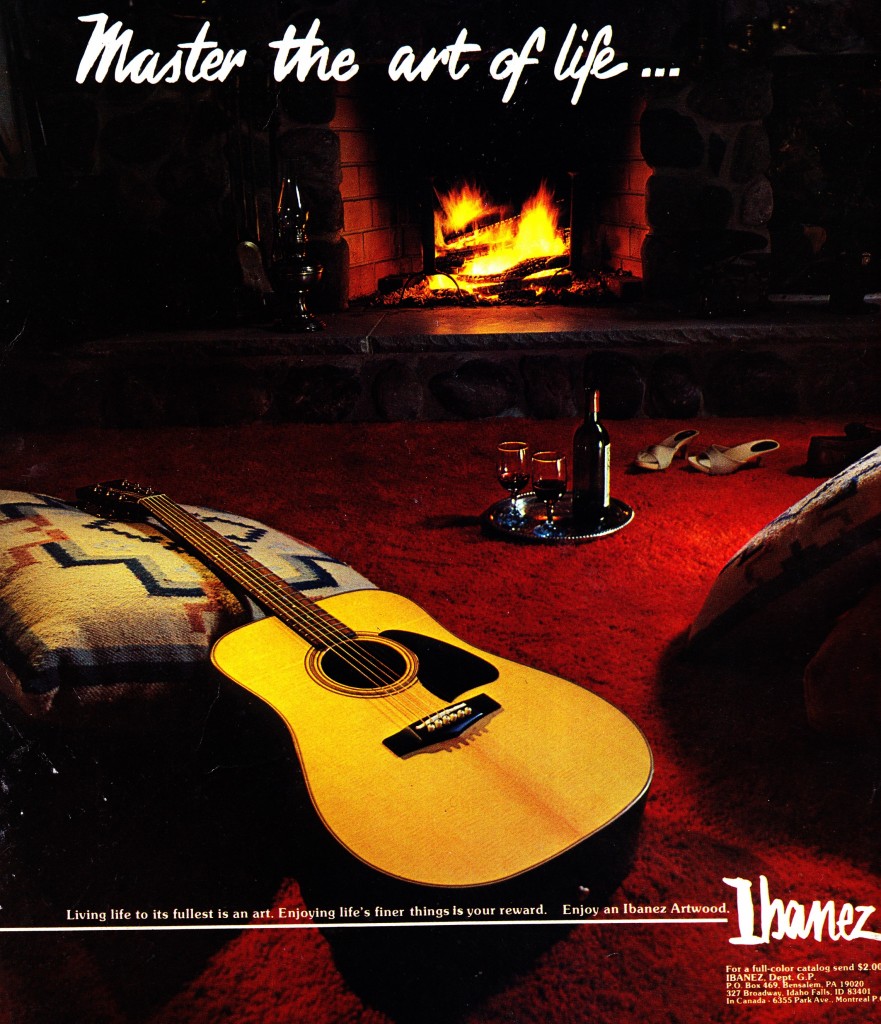 The heels have come off and the couple has exited the scene. Crucial to the progression of the movement from LR to BR: the fire; the wine; the dulcet tones of your Ibanez Artwood. All helpful tools in mastering the art of (reproducing human) life.
The heels have come off and the couple has exited the scene. Crucial to the progression of the movement from LR to BR: the fire; the wine; the dulcet tones of your Ibanez Artwood. All helpful tools in mastering the art of (reproducing human) life.
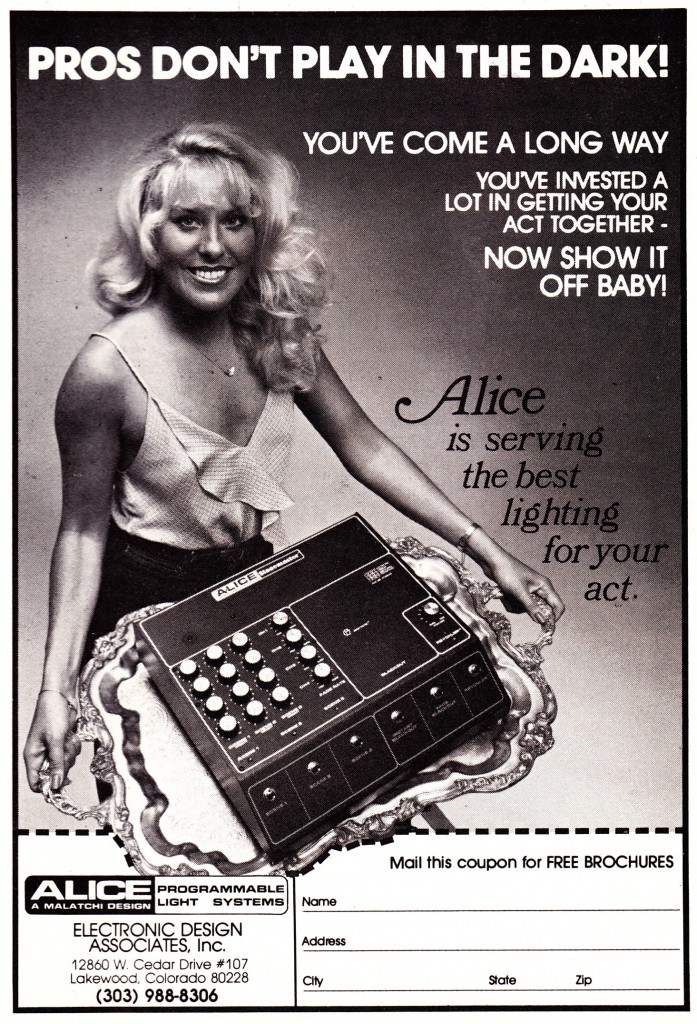 Those who have mastered their technique need not execute their practices in a darkened room. Consider our mood lighting. Mirrored (balls/ceiling panels) sold separately.
Those who have mastered their technique need not execute their practices in a darkened room. Consider our mood lighting. Mirrored (balls/ceiling panels) sold separately.
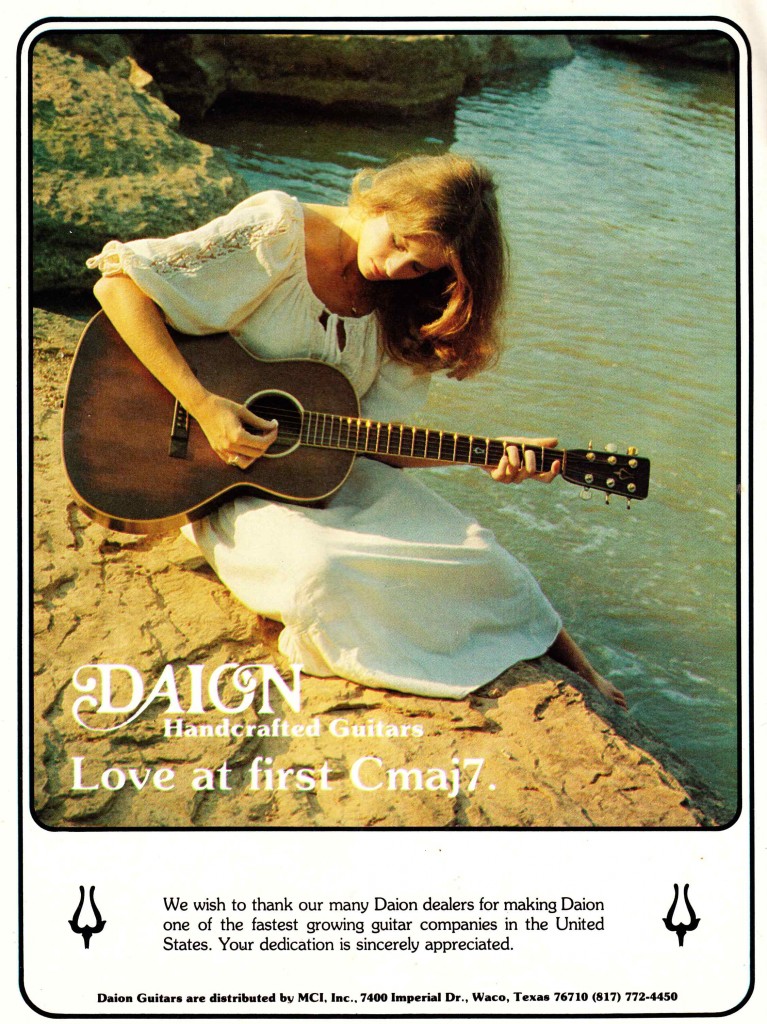 Daion guitars were built in the Japan in the late 70s/early 80s. I believe that the model depicted here is the L999 Legacy. Note the stylized ‘tuning fork’ logo on the headstock; Yamaha has used a similar motif for a century.
Daion guitars were built in the Japan in the late 70s/early 80s. I believe that the model depicted here is the L999 Legacy. Note the stylized ‘tuning fork’ logo on the headstock; Yamaha has used a similar motif for a century.